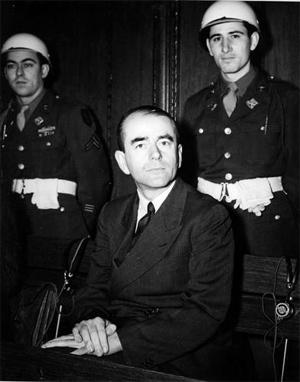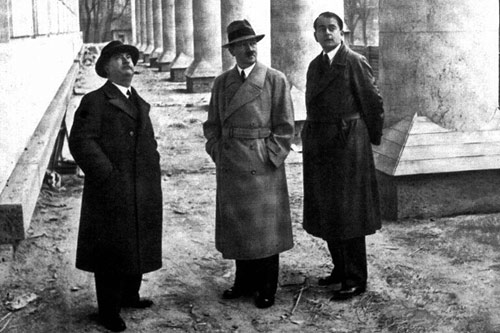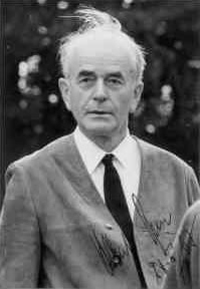Albert Speer

Albert Speer (19 March 1905, Mannheim - 1 September 1981, London)
Born into a family of architects, Albert Speer studied at the technical schools of Karlsruhe, Munich and Berlin, where he was taught by Heinrich Tessenow, qualifying in 1931. On hearing a speech by Hitler in 1930, he was filled with enthusiasm for National Socialism, and joined the party in January the following year, as its 474 481st member.
Hard-working, efficient and talented, Speer excelled in many competitions and was noticed by Hitler who, on becoming chancellor, made him his own personal architect tasked with building the city of Berlin. In 1933, he received his first official commission, from Joseph Goebbels: to contribute to the restoration of the Chancellery building in Berlin. The following year, he designed the setting for the Nuremberg Rallies, based on the ancient site of Pergamon, in Turkey. In 1937, Speer designed the German pavilion for the Paris Exposition.
His organisational talents earned him an appointment as Minister for Armaments in 1942, succeeding Fritz Todt. In 1943, he assisted Herman Goering with the Reich’s economic planning, drawing on Todt’s organisational principles: forced labour for the construction of roads and strategic sites.
Coming under suspicion in July 1944, following the failed assassination attempt against Hitler, he was saved only by the annotation “if possible” made by Claus von Stauffenberg on the list of plotters contacted to form a post-Hitler government.
Speer succeeded in maintaining a high level of German activity in 1944, at the height of the Allied bombings, even going so far as to limit the scorched earth policy desired by Hitler, in the latter months of the war.
In 1946, he was sentenced to 20 years’ imprisonment at the Nuremberg Trials, where he sat apart from the defendants’ bench and acknowledged his own guilt, though denying any responsibility for the Final Solution. This earned him the epithet “good Nazi”, but it would later be called into question in Der Spiegel newspaper, on 2 May 2005.
Held in the fortress of Spandau together with the likes of Karl Dönitz, Walter Funk, Rudolf Hess, Konstantin von Neurath, Erich Raeder and Baldur von Schirach, he was released in 1966.
Speer’s image as a “good Nazi” enabled him to join the SPD, which saw him as a model of German repentance and renewal.
His published writings include Erinnerungen and Spandauer Tagebücher. Speer died of a brain haemorrhage in London in 1981, while participating in a series of programmes for the BBC.
Source : MINDEF/SGA/DMPA

Albert Speer alongside Adolf Hitler.
Source: SHD

Albert Speer in 1967.
Source: www.blb-karlsruhe.de

